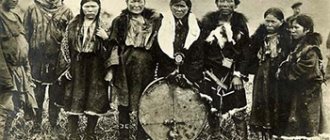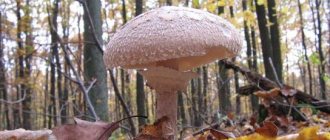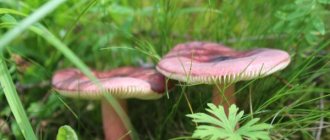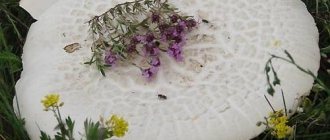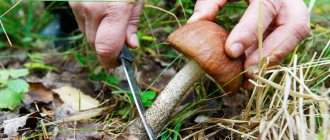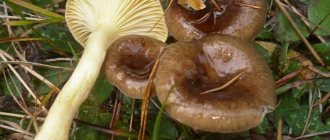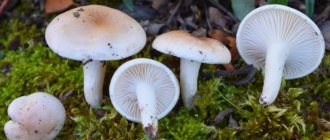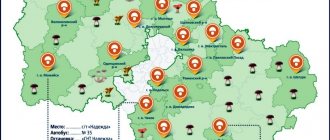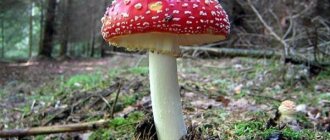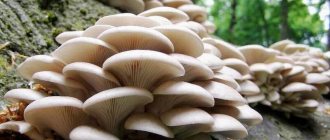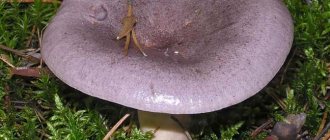Psilocybin is a psychedelic substance that has been known to mankind since ancient times.
It was obtained from certain types of mushrooms for various rituals. Now psilocybin mushrooms are recognized as narcotic, since in terms of the strength of their effect on the body they can be compared with such a well-known drug as LSD. That's why in drug slang they are called lsdshki mushrooms. Psilocybin is a derivative of psilocin, which belongs to the tryptamine family. The alkaloid has a low level of toxicity, but at the same time has a rather strong effect on the human psyche. A genus of mushrooms of the family Strophariaceae or Psilocybe (Psilocybe) are quite common mushrooms throughout the world that can be found on any continent. They grow in manure, swampy areas, sawdust, and forests.
The effect of psilocybe mushrooms
The famous scientist and chemist A. Hofmann synthesized a psychotropic substance from mushrooms in 1958. It was he who confirmed that psilocybe acts like a drug, changing a person’s consciousness. Psilocybin or hallucinogenic mushroom is called magic mushroom. Magics have properties atypical for mushrooms, in particular, they cause hallucinations. Mushroom pickers consider them toadstools and do not collect them, because they know that they are inedible and can cause a number of side effects.
Since psilocybin mushroom is an alternative to narcotic substances, its cultivation, collection and distribution are prohibited in our country. Magics are considered poisonous, but after consuming one mushroom, death does not occur. Not all of these mushrooms have been studied in detail; the effect of some of them on the body remains a mystery. Psilocybin mushrooms are conditionally toxic.
Spreading
Freedom cap.
Psilocybe semilanceolata is a very widespread mushroom, found almost everywhere. It is not tied to certain tree species, since it is a saprotroph and prefers manure for nutrition. It grows best in temperate climates, but is found even in subarctic latitudes. The greatest mass of fruiting is observed when night temperatures drop to +5 oC. The growth period is from late summer to late autumn.
Types of Psilocybin Mushrooms
Hallucinogenic mushrooms in Russia can be found particularly in the southern regions of the country, for example, in Sochi. Drug addicts know places and clearings where narcotic mushrooms grow year after year, which, in their words, “expand consciousness.” However, the drug effect has nothing to do with reality. A person feels powerful, great, immerses himself in other worlds, sees and hears what is not there. Regular use of psilocybin mushrooms may well lead to irreversible consequences on the human psyche.
The genus Psilocybe includes about 120 species of mushrooms that have hallucinogenic and psychoactive properties. Among them:
- conocybe tenera;
- conocybe velutipes;
- psilocybe cubensis;
- psilocybe cyanescens;
- psilocybe semilanceata;
- psilocybe strictipes;
- fiber blue-green;
- conocybe velvetypodia;
- Paneolus fringe, dung, bluish;
- Psilocybe montana;
- Psilocybe semilanceolate;
- Psilocybe erecta;
- psilocybe turning blue;
- Psilocybe papillary;
- Psilocybe Czech.
Places of growth
Where do psilocybe semilanceata or cyanescens grow in Russia, and how to distinguish them from other mushrooms? Oddly enough, such mushrooms grow not only in Europe or Asia, but also in our country. They are cosmopolitan, so knowledgeable people can easily find them in any nearby forest. Most often, psilocybe mushrooms can be found in places with high humidity: in animal pastures, in swamps, on the edge of a forest, in a wet meadow, in lowlands and ravines. When to Harvest Psilocybin Mushroom?
When do psilocybe mushrooms grow?
When do psilocybin mushrooms grow? The harvest season for psilocybin mushrooms is in the summer-autumn, they begin to be collected in mid-August. However, finding psilocybins in tall grass is quite difficult. How to identify a psilocybin mushroom and not confuse it with a dangerous toadstool?
How to distinguish psilocybe mushrooms?
How to distinguish glucinogen mushrooms? Pushushka mushrooms or LSD mushrooms differ from ordinary edible mushrooms with a “bald head”: the cap is shaped like a cone or bell with a tubercle in the middle. What do psilocybin mushrooms look like? The color can be either white or dark brown, depending on the conditions and place of growth. Mushrooms grow on long, thin, curved stalks. What do psilocybe mushrooms look like? It is quite simple to distinguish a magic from an edible mushroom: at the site of the break, the psilocybes turn blue.
What LSD mushrooms look like, differences from toadstools
It is quite difficult to distinguish a hallucinogenic mushroom from a toadstool externally, however, in the second case, the mushrooms have the following differences: a large dense cap, a flat or hemispherical shape of the cap, gray color, a young mushroom has the shape of an egg, a mild mushroom smell, a dense stem, has a thickening at the bottom, grows in close proximity to oaks and other deciduous trees. When consuming even a quarter of toadstool, a person experiences severe intoxication, which can lead to coma and death. At the same time, it is very easy to confuse toadstool and psilocybin mushroom. Without sufficient knowledge and experience, you should not go mushroom hunting.
Places and times of fruiting
You can often hear the opinion that hallucinogenic mushrooms grow mainly on the North American continent, being a favorite ritual raw material of aborigines and tribal shamans who perform all kinds of healing rituals. In fact, the distribution of psilocybins is impressive in its scale, often occurring in Eurasia.
Distribution area in Russia
And since most of the Eurasian continent is occupied by the Russian Federation, it is not at all surprising that in its vast expanses there are many glucogenic mushroom varieties (according to scientists, their number is more than 500 species). And since they are all saprophytes, the ideal habitat for magicians is an area close to human settlements with a large number of organic remains:
- cattle manure;
- humus;
- decaying wood;
- plowed fields;
- meadows and fields for grazing animals.
Moist environments are also optimal for the growth of these hallucinogens, which is why they can often be seen in estuaries and floodplains, near streams, and even on irrigated lawns of parks and homes. They grow in colonies, which means that when you see one mushroom, you can find a whole family in its immediate vicinity.
Some specimens are concentrated right along roads and busy highways, starting to appear in August and ending their fruiting only in early January. This feature contributes to the wide distribution of the family, which even does not tolerate the subarctic climate.
Effects of psilocybin on the body
How does psilocybin affect the body? When introduced into the gastrointestinal tract, plebiscite mushrooms are quickly absorbed into the blood and spread throughout the body. After which a powerful hallucinogenic and euphoric effect occurs. Consider the euphoric effect of psilocybin on the human body. The drug acts on the opioid receptors of the brain, activating the production of the “hormone of joy” - serotonin. After consumption, the mood improves, the person feels a surge of strength and energy, all senses become sharper, colors become brighter, sounds become louder, various visions and hallucinations arise, characteristic of a state of altered consciousness and drug intoxication. What are the benefits and harms of psilocybin?
Description
Psilocybe is blue. This is a rather attractive poisonous mushroom with an orange-brown cap and an off-white stalk. It is poisonous and contains substances that cause hallucinations.
hat
Psilocybe is blue.
Small - 2-4 cm in diameter, round. In more mature representatives, it is prostrate with wavy edges. The color is yellowish, light brown, and may also be reddish. In dry weather it is lighter in color, and during rainy weather it becomes oily.
Pulp
White, when cut it turns blue-green, which is how the mushroom got its name. Has a characteristic powdery odor.
Psilocybe cyanescens.
Records
Sparse, orange and light brown; more mature mushrooms begin to darken.
Leg
Also small, up to 3-5 cm in height, no more than 0.8 cm in diameter. Dirty white, then begins to turn blue. Remnants of the blanket can sometimes be seen on the surface.
Spore powder
Painted in red-brown colors.
Psilocybin mushroom - benefits and harms
Is eating psilocybin mushrooms dangerous or not? What are the benefits and harms of hallucinogenic mushrooms? There is absolutely no benefit from psychoactive drugs. You should not believe fairy tales about the expansion of consciousness and immersion in another reality, the opportunity to know yourself, etc. People under the influence of a drug completely fall out of the real world, being in their own subconscious. The danger, at a minimum, is that if a person has mental disorders, is in a bad mood or in unreliable company, he may have a bad trip, which is also characteristic of LSD. He will feel panic, see terrible hallucinations and experience horror.
What can Psilocybe semilanceolata be confused with?
Psilocybe semilanceolate differs from its counterparts in the original structure of the leg. If you roll it in your fingers, it becomes thread-like, slightly rubbery, and does not break or crumble.
Konocibe is tender. Inedible. It is distinguished by the brown-chocolate color of the hymenophore plates; the leg has clearly palpable longitudinal scars.
Its cap is rounded-cone-shaped, without pronounced tubercles.
Paneolus blue. Inedible. Its cap is creamy-sand or beige in color, becoming lighter with age; the plates are dark purple, almost black.
Distinct bluish spots appear on the cap
Paneolus ligamentum. Inedible. Can be recognized by a white concentric stripe. It has an umbrella-shaped shape and a brown-brown cap color. The plates are dark, chocolate-ocher.
Its leg is whitish-beige, with a slight bluish tint, often covered with white or dark scales
Sulfur head. Inedible. Psilocybe semilanceolate is very similar to it at a young age. You can distinguish it by its more spherical cap, without a pronounced bump in the center.
Overgrown specimens have flat or arching cup-shaped caps that are sandy brown in color.
Medical use
A synthetic analogue of natural psilocybin is quite actively used in medicine. Preparations based on it are used in the treatment of neuroses. The effect of the substance helps to identify and eliminate the causes of the disease. However, today, to a greater extent, psilocybe and drugs based on it are used by drug addicts for recreational purposes. The effect of the drug is as strong as when using lysergic acid or brands. Within a few hours after taking mushrooms, various mental disorders occur.
Psychedelics and hallucinogens only cause psychological dependence. A person can, but does not want to, give up eating mushrooms.
Against headaches
There is an opinion among addicts that psilocybin helps get rid of headaches. Is it so? American scientists have conducted a number of studies on this matter. Quite a lot of young people in the United States resort to taking mushrooms to relieve headaches, but no scientific evidence has been found for such beneficial properties.
Against drug addiction
Another common myth is that mushrooms help you get rid of drug addiction. In the treatment and rehabilitation of drug addiction, psilocybes and synthetic analogue drugs are not used, since narcologists themselves classify them as narcotic substances. Despite the fact that hallucinogens do not cause physical dependence or withdrawal symptoms, this does not mean they are safe for the human body. With regular, systematic use of psychoactive substances, they lead to the formation of mental disorders, such as schizophrenia.
Mental disorders
In Russia, psilocybins are not used to treat mental disorders, since their effectiveness in this area has not been proven. On the contrary, hallucinogenic effects aggravate the mental state of the addict, and various mental disorders may worsen, especially in patients prone to schizophrenia. Drug addicts who regularly use mushrooms admit that they periodically experience panic attacks, terrible hallucinations and visions. The full effect of psilocybe on the human body has not been studied, which poses a danger to users.
Responsibility for collection and distribution
Psilocybe semilanceolata is prohibited for distribution on the territory of the Russian Federation and in a number of foreign countries. The ban covers the following cases:
- collection in any territory, cultivation in artificial conditions;
- distribution in natural, dried, powder, boiled form;
- advertising and promotion of the use of products from this fruiting body;
- exchange, sale and donation of myceliums.
In case of proven abuses, punishment follows in the form of a fine, correctional labor, or criminal liability.
Signs and symptoms of use
There are several phases, depending on which one can identify certain signs of taking mushrooms with a hallucinogenic effect.
The first phase begins within 10 minutes after consuming the substance. At first, all a person’s sensations become dull, he becomes dizzy, sweating, irritability occurs, coordination of movements, and the functioning of the organs of vision and hearing are impaired. The connection with reality begins to disappear.
The second phase of drug intoxication occurs after 0.5-1 hour. Hallucinations appear, and what they will be like depends on the mood and state of the person at the moment. The effects of psilocybins are quite individual. People with a weak, unstable psyche may experience a state of horror and panic (“bad trip”). A person may behave strangely and inappropriately.
The third phase occurs 2-3 hours after consumption. It is characterized by the emergence of passivity and apathy, interest in the surrounding world dissolves, and the person is completely under the power of the drug. The “arrival” can last about 24 hours.
Psilobicin euphoria (effects)
The sensations, or in other words the euphoria, from hallucinogenic mushrooms depends on several factors, namely:
• from the environment; • from the dose taken; • on the individual characteristics of the organism that consumed it; • from products that were consumed together with mushrooms (they can enhance or weaken the effect).
Often, a decoction of hallucinogenic mushrooms is taken by people who perform various ceremonies and rituals. As a rule, such rituals are accompanied by music dominated by drumming, as well as dances reminiscent of chaotic body movements.
The consumed decoction of hallucinogenic mushrooms begins to act after 40-80 minutes. The effect lasts about 3-7 hours. The sensations from taking such mushrooms are similar to those that occur after using other psychedelic substances, such as burlap.
Often the euphoria from eating “magic” mushrooms is accompanied by hallucinations in the form of pictures painted in bright colors. There is also a shift in sensory and visual perception of surrounding people and objects. According to those who have experienced the use of psychedelic mushrooms, during their effects one can see sound, feel intangibles and hear color.
Consequences of psilocybin use
The harm of hallucinogenic mushrooms has long been proven. Despite the fact that mushrooms do not develop obvious psychological and physical dependence, and also do not develop abstinence, they are a dangerous drug for health. First of all, the harm of psilocybin mushrooms lies in their effect on the human psyche. In addition, they contain toxic substances that quite often lead to poisoning. What effect do psilocybin mushrooms have on the human body?
With long-term use of psilocybin, quite serious consequences arise for the health of the drug addict. Its use leads to mental and personality disorders, schizophrenia and paranoia.
Consequences of eating hallucinogenic mushrooms:
- diseases of the cardiovascular system;
- impaired renal function;
- problems with the gastrointestinal tract;
- intoxication;
- overdose;
- psychical deviations.
If an addict has consumed a large amount of hallucinogenic mushrooms, he may experience an overdose. This is a fairly rare phenomenon, but it occurs in drug treatment practice. If you see that the condition of a loved one is sharply deteriorating, he is experiencing suffocation, urgently call and seek urgent drug treatment. If a person has a weak pulse, chest compressions and artificial respiration will be required.
Help with overdose
Symptoms of mushroom overdose:
- fever, chills;
- hand tremors;
- lack of coordination;
- tachycardia;
- inappropriate behavior;
- nausea, vomiting;
- gastrointestinal disorders;
- sudden change of mood;
- aggressive behavior;
- suicidal tendencies.
To bring an addicted person out of this state, the help of a narcologist is needed. Overdose relief is carried out using a number of medications. If used systematically, mushrooms can lead to acute psychosis, as well as abnormalities in the central nervous system. If the condition worsens and assistance is not provided in a timely manner, a person may experience coma or cardiovascular failure. Psilocybin is especially dangerous for children and adolescents. This type of food poisoning can be fatal.
Mental effects
Psilocybes are quite unpredictable drugs. Under mushrooms, people can both “rise to heaven” and “descend to hell.” During the “arrival”, experiences can be both positive and pleasant, and negative and negative. This depends on many individual factors. If you are hypersensitive to the active substance, a negative reaction of the body may occur. The person will experience aggression, irritability, nervousness, a tendency to violence, suicidal thoughts, and panic attacks.
If a person’s condition was satisfactory, he will experience euphoria and happiness, a surge of strength, inspiration, freedom from problems and negative thoughts. The addict may experience hallucinations, depersonalization, and disruption of connections with the outside world. The person admires the world around him and behaves quite peacefully while the effect of the psychotropic drug persists.
Physical consequences
Systematic consumption of mushrooms can lead to demyelination and degradation of neurons. Some psilocybe can cause heart and kidney problems. A hallucinogenic drug threatens a violation of consciousness and loss of control over one’s actions.
Content:
- Mechanism of action
- Effects of psilocybin mushrooms
- Consequences of using natural psychodysleptics
- Overdose
- Legal status
- Laboratory studies of psilocybin
The ability of some fungi to influence the sensory parts of the cerebral cortex has been known to mankind for a very long time. Let's look at the effect of psilocybin mushrooms in more detail. How they affect the human psyche, and what are the consequences of their use.
The effect of psilocybin on the body and the development of addiction
In narcology, the mechanism of the drug’s effect on the addict’s body has long been studied. Like LSD, psilocybin is quickly absorbed into the intestinal wall and spreads throughout the body, reaching the brain. The drug activates the production of serotonin, which is why the narcotic effect occurs. Hallucinogenic mushrooms affect several areas of the human brain at once, in particular the cingulate gyrus. Myeloproliferative diseases occur. A person’s picture of the world is significantly distorted, including beginning to see and hear, and sometimes experience hallucinations.
Psilocybins inhibit the functioning of brain cells and also provoke the development of depression, or, on the contrary, an uplift in mood, a feeling of serenity and calm. Despite the fact that there is no physical dependence, a mental craving for regular drug use is formed. A person, having experienced the effect of a psychoactive substance, wants to use it again and again in order to again feel the state of drug intoxication.
Where does semilanceolate psilocybe grow in Russia?
The fungus is widespread throughout the Northern Hemisphere. Psilocybe semilanceolata grows even in the forest-tundra, thriving in the permafrost zone. In temperate latitudes it bears fruit abundantly from August to January. Also, Psilocybe semilanceolate is often found in the Vladimir region, Siberia, and the Far East. In the central regions of Russia, Leningrad region and Perm region.
Sometimes found singly, but often grows in families
Psilocybe semilanceolate grows in the Moscow region on meadows mown by autumn, floodplain lowlands, and overgrown swamps.
How fun mushrooms grow
Psilocybe semilanceolate loves grassy meadows, pastures, spacious forest glades, old parks and clearings. Prefers wet places: banks of reservoirs, artificially irrigated fields and lawns, old swamps. Undemanding to the composition and fertility of the soil, does not like excessively manured places.
Psilocybe semilanceolata fruits most actively from October to December. For development and growth, a temperature of 8-10 degrees Celsius and rainy, humid weather is enough for it. It forms a stable symbiosis with cereal grasses, so it is not found in the forest.
How to get rid of addiction?
The use and craving for hallucinogens and euphoretics is a real drug addiction. Drug addiction treatment is carried out in drug treatment clinics and rehabilitation centers. It is very difficult for a person to get rid of drug addiction on his own, since it always has its own psychological reasons. If a person showed attention to one type of drug today, then most likely he will continue his experiments and try something new tomorrow. The absence of withdrawal symptoms does not mean that the drug is safe. Its danger lies not only in intoxication of the body, but also in the occurrence of severe mental complications.
If you or a loved one are addicted to a particular drug, know that you will not be able to get rid of the disease on your own. Drug addiction is a progressive disease, which is characterized by the presence of breakdowns even after treatment. If you want to get rid of your addiction once and for all, seek qualified drug treatment help at. In the Krasnodar region, the use of mushrooms is quite common, despite the illegality of their distribution. If you see that a loved one often behaves strangely, surrounds himself with new acquaintances, uses strange substances, urgently call the narcology department.
Attention! Drug use causes great harm to your health and poses a danger to life!
Varieties of hallucinogenic mushrooms
Having figured out what mushrooms that can cause changes in consciousness look like and where they grow, it doesn’t hurt to pay attention to the most common representatives of this family. And if it is possible to at least superficially study the structural features of these varieties, then in the future there should not be any problems with their identification.
Fun mushrooms
Perhaps the most common in the near Moscow region and other Russian regions is Veselushka, also known as Psilocybe semilanceolata, which retains its toxic properties both in fresh and dried form. Small dome-shaped fungi on a thin curved stalk with a smooth cap surface have a dark gray hymenophore.
These fruits grow mainly in open areas in grass and nitrogen-fertilized soil. It is noteworthy that not all merry mushrooms contain a critical amount of psilocybin, and often the effect of their use largely depends on the climatic conditions of growth and the way the body perceives the substance. However, this is not a reason to taste them.
And if the mushrooms do have an effect, it will happen within 20-50 minutes, despite the fact that the effect itself can last from 4 to 7 hours, accompanied by hallucinations. There are often cases when the effect of toxic components on the central nervous system is so strong that the patient never recovers in the future, suffering from serious mental disorders or partial/complete loss of reason.
Paneolus bellflower
Unlike Veselushka, this variety is considered early, beginning to appear in the young grass of valleys and river floodplains already in mid-April. Among the features of the species are a darker and wider cap of red in youth and a gray-brown tint in old age, with characteristic cracks and remnants of a blanket along the border, tasteless brittle flesh and a cavity inside a thin leg that thickens downwards, which can be either curved or perfectly smooth .
Hay beetle
Fungi begin to appear in early spring, continuing to grow until the first hard frost. The two-color color of the variety with a contrasting transition from light beige to chocolate makes it quite recognizable. The name itself suggests that the favorite growing environment of the variety is soil well fertilized with animal excrement.
The condition of the surface of the fungus largely depends on the local climate, and if it is humid and damp outside, the cap of the dung beetle becomes soft, covered with numerous grooves. In sunny, dry weather, the mushroom, on the contrary, begins to crack and peel off.
Mycena pure
A rather rare variety for European countries, listed in the Red Book, with a pale gray-brown color, a lamellar hymenophore close to white, a fragile stalk empty inside and a moist mucous surface.
The flesh of the fungus is watery, exudes an unpleasant odor and contains a hallucinogenic substance such as muscarine, which is why in some sources mycena is classified as poisonous. Like many other saprophytes, it grows on rotting wood and fallen leaves.
Psilocybe montana
The second name of this variety of psilocybe is Montana, which is due to its bright brown color and masonry conical cap with a pronounced nipple. The leg of the mountain mushroom is stronger, often curved closer to the base and without a protective ring in its middle part.
The hymenophore is lamellar, but very rare, often becoming bare as the fruits mature, lifting up the brims of their hats. These mushrooms grow in forests and wetlands, where there is a lot of lichen and ferns, although entire families are often found in sandstones.
Symptoms of poisoning
Absolutely all types of psilocybin mushrooms cause intoxication in the body. The period of poisoning lasts from thirty minutes to three hours:
euphoria or excitement initially appears;- surrounding objects appear brightly colored;
- impaired balance and coordination of movement, unsteady gait;
- mental disorder;
- hallucinations;
- causeless laughter;
- Aggression and suicidal ideas develop.
In very severe cases of poisoning, coma and death from acute heart failure can occur.
In case of intoxication, gastric lavage is first done. If the state is agitated and aggressive, seduxen, aminazine and much more are prescribed. When hypoxia develops, artificial ventilation of the lungs is performed.
